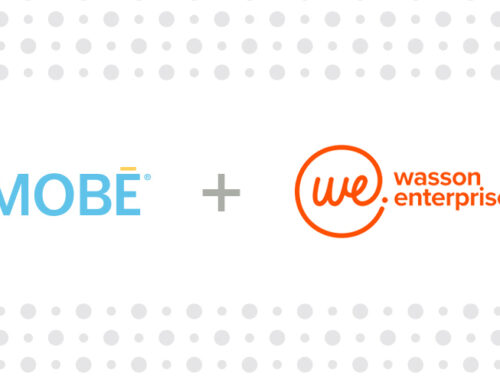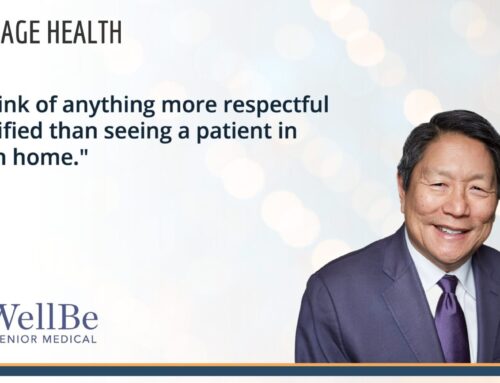Choosing the Best Point Solutions
By Mark Stryker, EVP
“Digital technology and innovation always run five years behind in healthcare.” So goes the axiom, and for those of us who’ve been around the health ecosystem, I think it used to be true. But is it still?
It’s reasonably safe to say that, over the last five years, more money has been flowing into early-stage capabilities within healthcare than into any other industry around the globe, with the lion’s share of these funds being directed at the U.S. system. This has resulted in what is probably the largest and fastest proliferation of digital tools in any industry in history. And the stakes—the absolute requirement to make good selections in the tools you choose on behalf of your members or patients—have never been higher.
Every day here at Leverage Health, we talk with companies aiming to solve problems big and small in tech-driven healthcare—and there’s no shortage of companies to talk with. According to a report by IQVIA’s Institute for Human Data Science, in 2020 alone, the number of digital healthcare applications ballooned to 90,000—the equivalent of 250 new solutions a day. A competitive, free-enterprise healthcare system encourages innovation, and this is as true for pharmaceuticals as it is for digital innovations. In 2018, more than half of new medicines worldwide came from the U.S. [1] [1] https://innovation.org/en/about-us/commitment/innovation-fragility-heres-the-reason-america-is-an-innovation-powerhouse
So What’s the Problem with Digital in Healthcare?
Why is this sector so crowded and noisy? Why are some of the same people who used to lament how far behind the industry was now sometimes heard to wonder if we’ve gone too far? How can we ensure that the best ideas—the ones that deliver the most value to consumers and businesses—are the ideas that succeed? And finally: How do we make sense of all these point solutions?
Let’s start with the last and loudest part: all those companies with point solutions. They’ve exploded, and there are more solutions every day. In many ways, a member trying to find a great doctor isn’t too dissimilar from a health insurer trying find the right mix of digital health solutions for their member. The truth is very simple, and innately we all know it: All doctors and all solutions can’t be right for every member—there’s a best, a worst, and everything in between. But how to tell which is which? How do we cut through the PR and marketing hype to understand which ones can actually do what they claim to do, and help you reach meaningful health and financial objectives?
The Good News: Data
The good news is that there’s a simple way to quickly cut through most of the noise: data. The way through generally begins by recognizing that there are two types of companies: those that embrace data, and those that avoid data. In short: When you start asking companies to show you their data—that is, how they track and measure their results—and how those results stack up against their competitors’ results, the lists begin to sort themselves very quickly. While you might not be able to tell one provider from the next by looking at a few webpages, you can always tell different digital health solutions apart if you look—really look—at the data.
Now for one of the most crucial questions: How do you ensure that you choose the best solutions? While this might sound obvious—of course you want the best solutions to, but which ones are best is actually not so obvious. The key—no surprise—is data. One of the best ways to cut through all the media hype is simply to ignore it and focus on the information at hand. The solutions that should always be first on your list are those that directly and openly measure their outcomes—and maybe have them confirmed by independent parties. Once you’ve found a solution that supports your specific objectives, every new possibility that comes down the pike should be compared directly with it. The criteria you use to find an effective solution should be applied evenly across the whole ecosystem of point solutions.
How to Handle that Flood of Media Information
But what, you might ask, about that constant flood of media “information?” The best way to wade through it is what we do here at Leverage Health—with source material, reporters, and content creators finding new solutions for you to evaluate. That’s it. When a company comes to our attention, whether through a press release, an investor, or a friend in the industry, we simply ignore the vast majority of the media hype focusing only on the claims that company makes and then saying to them, “Prove it—with data.”
What to Target
Not all data are created equal and some data are simply more meaningful in helping you make good decisions. So what are the key types of data that actually mean something? For a start, stick with the types of information that align with your organization’s most important objectives. This doesn’t have to be overly complex. Things like:
- Medical Cost Reduction—If a company is provably saving material dollars (and willing to stand behind it), then you’ve got a good starting point.
- Health or Clinical Outcomes—If patients are getting healthier and staying that way, then everyone wins.
- User Experience and Affinity—If people are saving money, getting better, and liking it, then you’ve got a keeper.
- Technical Aptitude—If a company can do everything above, as well as make it easy to move data securely, and make their user experience look and feel like your user experience, you’ve locked in on the new Quadruple Aim.

It’s Not Always Your Way or the Highway
Next, look at the data that a particular solution measures and shares with you. How does that information line up with how your organization internally measures things? If it’s not done in ways that support how you measure success, that’s a big red flag. If, however, a company measures things differently from you but has structured and rigorous rationales for how and why it measures, you may actually have found a great partner to learn with in ways that will result in better outcomes for both organizations.
We also have four cardinal rules that we try to live by, both inside Leverage Health and out there in the big, crowded, noisy world of Digital Health and data:
- Begin with the end in mind. Know exactly what you’re solving for before you start, and ensure that the solution’s objectives align with those of your organization.
- Find great partners: solutions that have data and are willing stand behind it. That means going at risk with you on your objectives. The folks willing to put their money where their mouths are—those are the ones who will help you win.
- Get comfortable with challenging your own assumptions and changing your viewpoints, if that’s where the data take you.
- When you’re making a selection, be sure that the potential partner’s team meshes with your team. Act as if you’re hiring not just a vendor but a coworker—someone your personal success will depend on.
One More Time—Focus on the Data
Even if you’re wanting to try something new—the latest whiz-bang that speaks to you but that doesn’t yet have much or any data—stay focused on the data. Prioritize the things that are important to you—the data that you want out of the process—and on what you’re working to achieve. That way, you’ll know whether or not you’re approaching your goal.
No matter what type of innovation we’re considering—whether it’s a physical-therapy application or a solution that helps control dermatology spending—we stay true to our four directives. Remember, the latest isn’t always the greatest. Even when that spanking-new whiz-bang app calls to us like nothing else, we stay focused on the data.
If you think Leverage Health can help you make a better choice or find a better digital solution for your company, don’t hesitate—give us a shout.







Stay In Touch